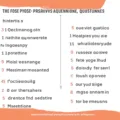In recent years, mindfulness has gained significant traction as a means to improve mental well-being and overall quality of life. One of the most widely used tools to measure mindfulness is the Mindful Attention Awareness Scale (MAAS). This article delves into what MAAS is, how it works, and its benefits.
What is the Mindful Attention Awareness Scale (MAAS)?
The Mindful Attention Awareness Scale (MAAS) is a psychometric tool developed to measure an individual’s attention and awareness in the present moment. Created by Kirk Warren Brown and Richard M. Ryan in 2003, MAAS is designed to assess mindfulness, which is the practice of being fully engaged and present in the current moment without judgment.
How Does the MAAS Work?
The MAAS consists of 15 statements that respondents rate on a 6-point Likert scale ranging from 1 (almost always) to 6 (almost never). These statements are designed to capture various aspects of everyday mindfulness, such as:
- I could be experiencing some emotion and not be conscious of it until sometime later.
- I break or spill things because of carelessness, not paying attention, or thinking of something else.
- I find it difficult to stay focused on what’s happening in the present.
By averaging the scores, the MAAS provides an overall mindfulness score, with higher scores indicating greater mindfulness.
Benefits of Using the MAAS
Using the MAAS can offer numerous benefits, including:
- Self-awareness: Helps individuals become more aware of their thoughts, emotions, and actions.
- Stress reduction: Promotes relaxation and reduces stress levels.
- Improved mental health: Linked to lower levels of anxiety and depression.
- Better focus: Enhances concentration and cognitive function.
How to Interpret MAAS Scores
Interpreting MAAS scores involves understanding the implications of high and low scores:
- High scores: Indicate a high level of mindfulness, suggesting that the individual is generally more attentive and aware of their present moment experiences.
- Low scores: Suggest lower mindfulness, indicating that the individual may often be distracted and less aware of their present experiences.
It’s important to note that MAAS scores can vary depending on various factors, including mood, environment, and recent experiences.
Practical Applications of the MAAS
The MAAS can be used in various settings, including:
- Clinical settings: To assess and monitor mindfulness levels in patients undergoing therapy.
- Research: To study the effects of mindfulness interventions on mental health and well-being.
- Personal development: For individuals to track their mindfulness progress over time.
FAQ
What is the purpose of the MAAS?
The MAAS is designed to measure an individual’s level of mindfulness, specifically their attention and awareness in the present moment.
How is the MAAS scored?
Respondents rate 15 statements on a 6-point scale. These ratings are averaged to provide an overall mindfulness score.
Can the MAAS be used for self-assessment?
Yes, individuals can use the MAAS for personal self-assessment to gauge their mindfulness levels and track progress over time.
Is the MAAS reliable?
Research has shown that the MAAS is a reliable and valid measure of mindfulness, with strong psychometric properties.
Who can benefit from using the MAAS?
Anyone interested in improving their mindfulness, including individuals, therapists, and researchers, can benefit from using the MAAS.









